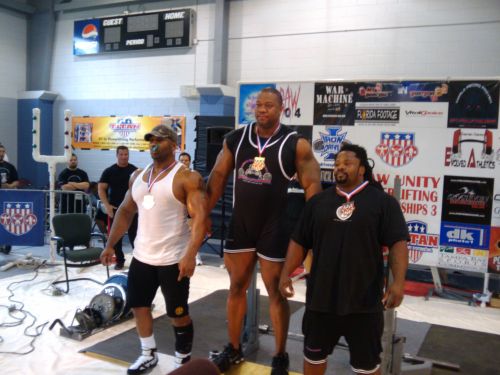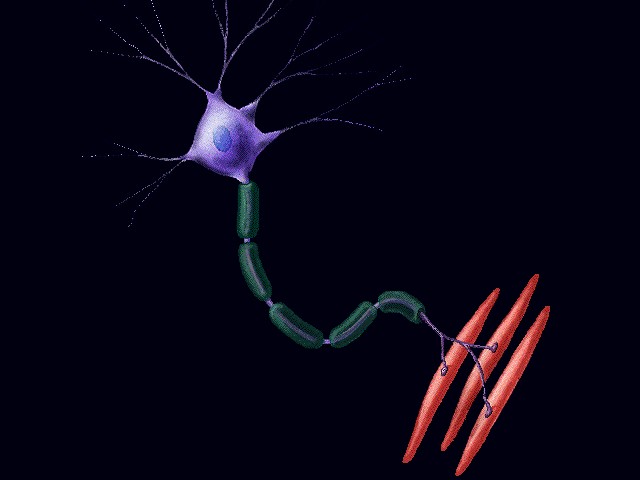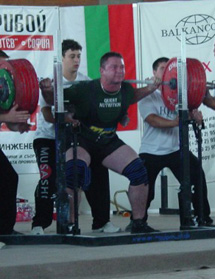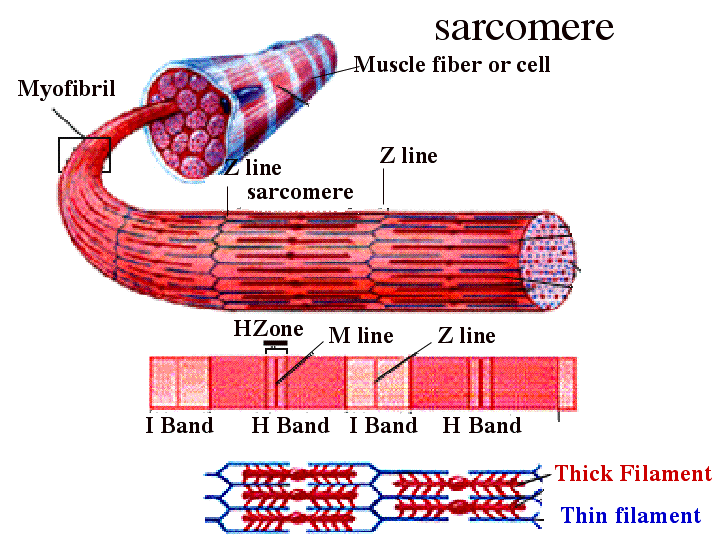Physiology for Meatheads -- The Fundamentals
by Mike Tuchscherer

Hello everyone and welcome to my new series, Physiology for Meatheads, where we take the sometimes complex topics of physiology and break them down so we all get more than just the basics. This series will help us all understand why training works and ultimately how to train more effectively.
This first installment will cover the basics of how our muscles contract. The first thing to understand is that there are three fundamental types of muscle in the human body. There is smooth muscle, which makes up much of our internal organs. There is cardiac muscle, which makes up contractile elements of the heart. And finally there is skeletal muscle, which makes up the muscles that move the skeleton. This article will discuss the way skeletal muscle functions in the human body.
First things first...
In most situations, skeletal muscle is voluntary, which means we have control over it. As many of you know, I'm a fan of breaking processes down into a step by step sequence. So in this case, we're going to look at a voluntary muscle contraction from start to finish.
The brain says...
Movement of voluntary muscles begins in the brain. A nerve signal travels from the brain down the spinal cord and through a system of peripheral nerves to get to the targeted muscle. The brain and the spinal cord constitute the Central Nervous System. The CNS is a highly robust system of nerves that serve a wide variety of voluntary and involuntary purposes. So when you hear someone say that their CNS is "fried", that would mean that their brain/spinal cord has a reduced ability to transmit signals to the muscles. As you can imagine, depending on the severity of this condition, it could be quite serious. Luckily, the CNS is very durable and able to handle large quantities of work.
As an athlete gets more refined at executing their particular sporting movement, they are able to generate a stronger signal from their CNS. The greater the signal strength, the more taxing it is for the CNS. This is why you are more likely to see cases of CNS fatigue in advanced athletes than you are novice athletes. And even in the case of the advanced athlete, training is often constructed to avoid this situation.
Back to the yellow brick road...
After the nerve signal leaves the CNS, it travels through the network of nerves (the peripheral nervous system) that leads to the targeted muscles for contraction. The signal may reach a large number of motor units or only a few. A motor unit is a group of muscle fibers and the nerve that activates them.

a motor unit
If the nerve signal that reaches a particular motor unit is strong enough, all of the muscle fibers in that motor unit will activate. If it is not strong enough, it will not activate at all. Each motor unit can contain a very wide range of muscle fibers. Motor units requiring delicate movements (such as the eyelids) may have only 50 muscle fibers per motor neuron. Motor units that require less precise movement typically contain more fibers (up to 1,500 fibers per motor neuron in some muscles).
As stated previously, if the signal is strong enough, all the fibers in that motor unit will contract. The signal strength required to make the fibers contract is the Threshold of those muscle fibers. Some muscle fibers require a high signal strength to reach their threshold. These are aptly named High Threshold Motor Units. These typically are "fast twitch" muscle fibers (aka Type IIb). Other fibers do not require such high signal strength to cause them to contract. These are lower threshold motor units and are typically "slow twitch" fibers (aka Type I).
Since slow twitch fibers contract more easily than fast twitch fibers, they usually contract first. As the nerve impulse grows, it recruits fibers of a higher and higher threshold.

Anybody hungry???
Before we discuss the dynamics of the neuromuscular system further, it's important that we know what happens to each fiber as it contracts. The nerve signal itself does not cause the fiber to contract. Before we talk about what does allow it to contract, we should understand how a fiber is made up.

A muscle fiber is a long, narrow object, but if you looked at a cross section of a muscle fiber, it might look something like a slice of pimento loaf. The "meat" of the pimento loaf represents the Sarcoplasm. The pimentos represent Myofibrils.
The Sarcoplasm contains a large amount of glycogen, myoglobin (which helps store a very very small amount of oxygen in the muscle fiber), and Calcium. Sarcoplasm also contains Mitochondria, which is the power plant for the muscle fiber. Mitochondria produces Adenosine Tri Phosphate (ATP), which will come into play later.
Myofibrils, the "pimentos" from our pimento loaf analogy, are inside the Sarcoplasm. The Myofibril is the part that actually contracts. These are long, thin strands that run the length of the muscle fiber. Each myofibril is made of sections. These sections are called Sarcomeres.
I know there are a lot of levels here, but don't tune me out yet! We're almost there!
Each Sarcomere is made up of Actin and Myosin (aka "thick filament" and "thin filament"). Actin and Myosin are what actually cause the muscle to contract. Actin forms a kind of grid with small gaps between rows of Actin. The Myosin are small pieces that are in these gaps. When a muscle contracts, the Myosin create small cross-bridges to the Actin. The Myosin then pulls both sides of the Actin grid closer together. Thousands of these tiny movements are what causes the larger muscle to shorten.
Learn some Ch-imistry
So to back up to the level of the muscle fiber once again....
Once the motor neuron supplies sufficient signal to the muscle fiber, it depolarizes the cell, which simply means it changes the cell electrically so the following can take place.
The calcium (which is stored in the Sarcoplasm) is released. The, using some chemistry that is way too deep for this article, the calcium binds with Troponin (in the Myofibril) and moves Tropomyosin. Remember, inside the Myofibrils are Actin and Myosin. By moving away the Tropomyosin, this exposes the Actin so the Myosin can bind to it and contract.
No "and then"!
The Actin being pulled together by the Myosin is what causes the muscle to shorten. But where does the Myosin get the energy to pull on the Actin like that? It gets it from ATP (mentioned earlier). By breaking down the chemical ATP into its component parts, energy is released. Using this energy is what allows Myosin to pull on the Actin. Where it gets ATP and how it replenishes ATP is the topic of an entirely different article.
So what? SO WHAT?!
You may be wondering how this matters to you in any way shape or form. First of all, it may be news to many that the nerve impulse is not the sole reason for a muscle to contract. There are many moving parts and bad performance + no soreness does NOT mean that your "CNS is shot".
Other ways it matters will come later. As with many things, the fundamentals can sometimes seem dry or inconsequential, but they are necessary to a better understanding later on. It is difficult to understand energy systems if you don't know why muscles need ATP. It's hard to be aware of specialized nervous impulses without understanding how Actin and Myosin work.
So congrats to you for working on your basics! As this series progresses, it will be sure to pay off!
Mike Tuchscherer is the owner of Reactive Training Systems, a company dedicated to individualized physical training. The goal of RTS is to help you become a dominant force in your sport! Learn more by visiting www.ReactiveTrainingSystems.com.
Mike himself is an accomplished Powerlifter. He has over 12 years of experience training and researching the best training methods in the world. Mike has competed in raw and single ply competitions. He recently won the Gold medal representing the USA at the 2009 World Games; becoming the first American male to ever win this distinction. His best lifts in IPF competition are a 903 squat, a 644 bench press, an 826 deadlift, and a 2342 total in the 275 pound weight class.
More Articles By Mike Tuchscherer
Return to the Workout Articles Archive
|